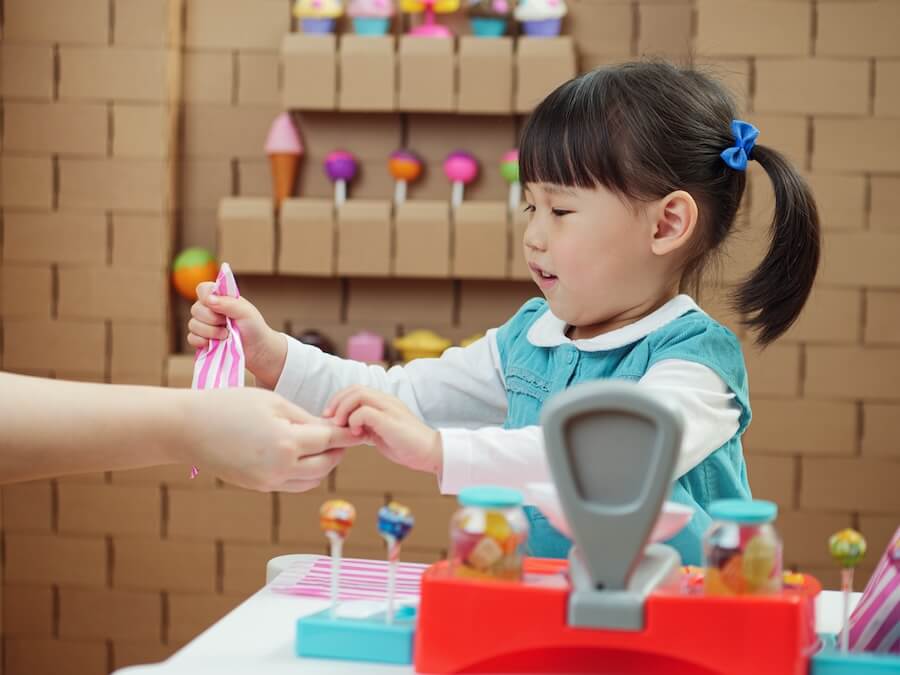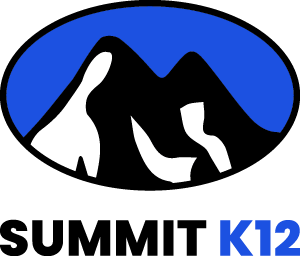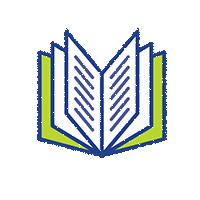It’s Spring, and we are getting close to closing out the 2024-2025 school year! 🌸 🌻
If you are looking for some fun and engaging activities for the end of the school year – specifically for multilingual learners, then this article is for you!
Here’s what we cover in this read:
- End of the school year wrap up
- 5 unique and engaging lessons for multilingual learners
- 2 bonus ideas!
Are you looking for fun activities for your multilingual students for the end of the 2024-2025 school year?
We’re not quite there yet, but students and teachers are preparing to mark another school year’s end in a few months.
As summer approaches, you and your multilingual students can begin to reflect on the journey you’ve taken this school year.
The final weeks of school in a multilingual classroom are often cause for celebration and bittersweet farewells. As a multilingual teacher, you now have time to reflect on student progress and better understand their language achievements, goals, and challenges.
Academic achievements are critical when learning English; however, measuring a student’s progress at the end of the year goes beyond grammar and vocabulary to newfound confidence and cultural adaptation.
Now is the time to being tying up lessons, assessing growth through projects or conversations, and preparing students for summer break, where language practice might wane.
Take pride in knowing you’ve helped your students with the tools they need to begin to navigate an English-speaking world. At the same time, celebrate the seeds of curiosity and resilience you’ve planted in hopes they will continue to flourish long after the classroom empties.
Now is the time to look back on the moments that made the school year unique and create lasting memories that students will carry to the next grade.
You can use these fun and engaging end-of-year activities to celebrate with your multilingual learners on the final day of school.
Here Are Our Top 5 End of The School Year Activities for Multilingual Students!
Story Treasure Hunt

Create a simple story treasure hunt where clues are written in English (e.g., “Look under the blue chair next to Pedro’s desk” or “Find the green box near the window close to the group working table”). Have students work alone or in pairs, depending on their English levels. Each clue leads to a small prize or a piece of a short story they can read aloud together at the end.
Why is a Story Treasure Hunt a Good Activity for Multilingual Learners?
A treasure hunt format game makes learning fun and motivating by sparking students’ curiosity and excitement, turning language practice into an engaging game. Instead of focusing solely on phonics and rote memorization, students are invested in the game because it’s fun, engaging, and there is a reward at the end.
This activity also builds practical language and social skills (CALP) through simple, real-life English clues.
For example, using sentences like, “Look at your friend’s chair” or “Find the box near Raymond’s desk” reinforces the use of social language students need to succeed at school and in their lives.
Additionally, when students collaborate while solving problems through clues, they are encouraged to speak, engage, ask questions, and work with their peers. This lesson can boost confidence, improve speaking and pronunciation, grow fluency, and provide the extra confidence students need before they leave for summer break.
Have Students Write Future Letters to Themselves

Having students write future letters to themselves is a reflective and educational exercise that fosters self-awareness and personal growth. It encourages students to pause and evaluate their values, challenges, and aspirations. It also promotes goal-setting by asking them to envision their future selves.
This process helps them clarify what they want to achieve in their lives. These letters can focus on simple ideas for students working at beginning levels and can be modified for students at higher levels.
Depending upon English levels, you can ask students to write simple goals, or you can focus on personal, academic, or professional goals. These letters help build perspective by connecting present actions to long-term outcomes. Therefore, it is a powerful tool for developing foresight and making predictions.
Beyond reflection, the activity creates an emotional bridge between a student’s present and future. When they revisit their letters years later, they can reconnect with their younger selves, measure their growth, and see how their priorities have evolved, offering a unique sense of accountability and continuity. Finally, this project can double as a creative writing exercise, sharpening their ability to express themselves authentically while providing a tangible reminder of their journey. This project is like a time capsule that captures their mindset and hopes at a specific moment.
Why is Writing a Letter to Your Future Self a Good Activity for Multilingual Students?
Having multilingual students write future letters to themselves is an excellent idea because it boosts self-awareness and encourages personal growth through reflection. These letters can also let your students think about their current lives, including their values, struggles, and future dreams.
Future letters can also help them connect their present efforts to future success, building skills like planning and foresight, which are valuable both in language learning and in life.
Two Additional and Engaging Activities you can do with Future Letters!
👉 Save the Letters and Send Them Back to Students in a Few Years
As their teacher, hold onto their letters and send them back home through the mail as a surprise a few years later. My daughter’s teacher did this activity in first grade, and then she sent the students their letters once they reached sixth grade. There is still something special about snail mail – moving away from the digital world, and looking back on handwritten notes can create special memories. For me, it was exciting to see her academic growth, but most importantly – it was terrific to see her growth as a person in such a short time. Your students will have a blast looking back at their former letters.
👉 Show Students Their Future Selves Based on Their Goals and Aspirations
AI in the classroom faces many challenges – some schools embrace it, while others push it away. There are many stories, claims, and concerns about students using AI to write essays or complete assignments, causing concerns about honesty and originality in academics.
However, there are also times when AI can be used for good in education.
Did you see the video of the teacher who used AI to show students their future selves? She created images of her students in the future – and showed them living out their career goals and dreams.
For AI, this project was a simple idea with an incredible impact. Want to be a firefighter? The image will show your student in fire gear. Dream of becoming a doctor? You can show your students in a lab coat – stethoscope and all.
According to Tuğberk Hasanoğlu, this video is from a small town called Borçka in Artvin, Turkey.
Give your Class an End-Of-The-School-Year Survey
Just like people ask you for a review or feedback after you purchase a product or a service, you should consider asking for feedback from your students during the last weeks of school. They can give you valuable insights into what worked for them, what didn’t work, and how you can improve in the future.
You can create a survey in Google Forms, and make sharing students’ names and emails optional.
Making the form anonymous makes you more likely to get honest feedback. You can ask some questions and modify them accordingly for English levels.
- What did you like about this class?
- What did you dislike about this class?
- Name one thing that was hard at the beginning of the year but is easy now?
- Name one thing that your teacher (your name) could do better?
Why are Survey Forms a Good Activity for Multilingual Students?
An end-of-the-year class survey is an excellent activity for multilingual students because it provides a meaningful opportunity to practice language skills in a real-world context. Surveys encourage students to use vocabulary and grammar structures they’ve learned throughout the year, such as forming questions, expressing opinions, and discussing preferences.
By designing or responding to survey questions, students engage in listening, speaking, reading, and writing—all key components of language acquisition.
This activity also fosters a sense of accomplishment as they reflect on their progress, interests, or experiences, reinforcing their confidence in using English in a practical, interactive way.
Memory Jar

Provide students with slips of paper to write or draw their favorite school memory in English (e.g., “I liked the park trip”). Collect them in a jar, then read a few aloud and guess who wrote them.
Why is A Memory Jar a Great Activity for Multilingual Learners?
This is an excellent end-of-the-year activity for multilingual students because it combines language practice with personal reflection in an engaging manner. It’s also an activity that is useful for beginners. Writing or drawing a favorite school memory encourages students to use English to express themselves creatively, applying vocabulary and sentence structures they’ve learned throughout the year.
Beyond language development, the Memory Jar fosters a sense of connection and celebration in the classroom.
If you have time, share a few memories aloud with your classroom, and have students guess who wrote each memory. Sharing stories from the jar can encourage laughter, engagement, and spark ongoing future conversations. Finally, it also encourages listening and speaking skills as students engage with each other, which helps to build a shared sense of community and belonging.
And the jar itself becomes a keepsake, symbolizing their collective journey.
Role-Play Grocery Shopping

Set up a pretend grocery shopping day where students can practice using vocabulary words such as “food, shop, buy, tomato, turkey, sell.” Have students practice shopping for their items by taking turns as different roles in the store. Work on basic English phrases such as “How much does this cost?” or “I want to buy this tomato.” If you have the materials, create a market shopping place as realistic as possible. Your students will love pretending to buy and sell items with pretend money for extra fun.
Role-playing grocery shopping is an engaging and realistic end-of-the-year activity for multilingual students because it offers a hands-on, engaging, and interactive way to practice and use critical vocabulary English terms and phrases in a simulated real-life scenario.
When students practice going to the grocery store, they can use their English skills in a real-world scenario; this activity opens up many potential learning opportunities where multilingual students can continue to build on their English skills holistically. They can also practice polite exchanges, which can help build their listening and speaking abilities in a fun and real-world environment.
This shared experience builds classroom community for multilingual students, celebrates their progress, and leaves them with a positive, engaging memory of using English – setting and encouraging tone for their future language learning.
Finally, role-playing grocery shopping encourages collaboration and creativity, making it a memorable way to wrap up the school year.
What other activities for the end of the school year do you find helpful for multilingual students?








